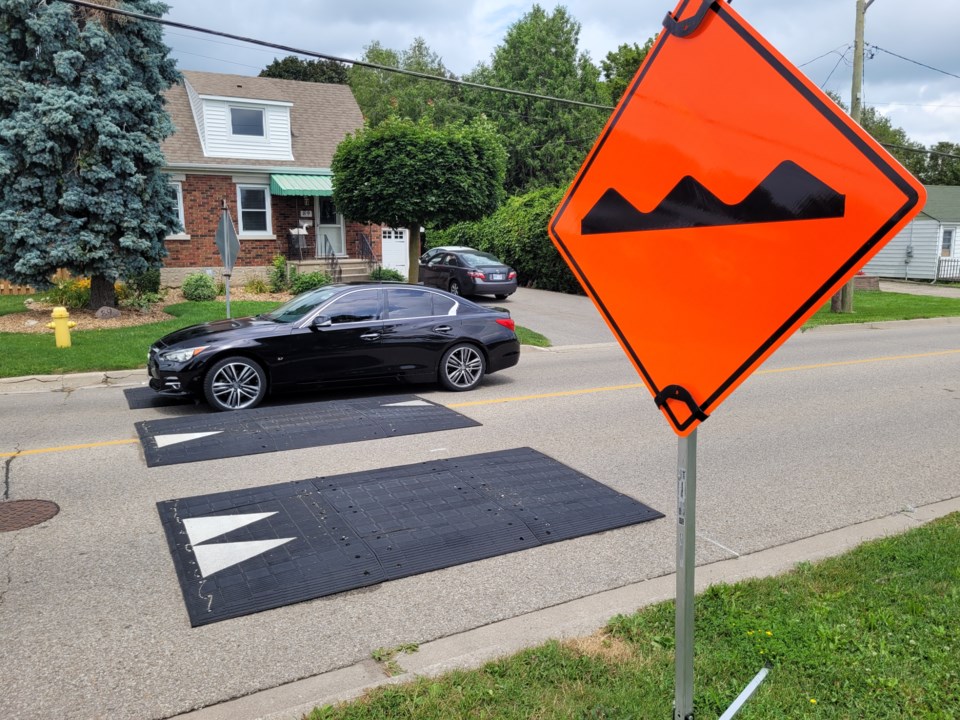The impact of temporary, rubber speed cushions placed along Grand Ridge Drive and Fisher Mills Road last month will be assessed by speed studies to be completed by the city this fall.
The speed cushions, part of a pilot project to test their effectiveness, were installed on the roads last month.
In an email to CambridgeToday, Shannon Noonan, manager of transportation engineering for the City of Cambridge, said the data from the pilot program will be compared to previous studies to determine their effectiveness.
The city will also send a questionnaire to all properties fronting the streets to gather feedback from residents about how the speed mitigation measures worked.
The small speed humps are positioned to fill the width of the road and are designed to slow vehicles while having a minimal impact on emergency vehicles.
The pilot was originally planned for Ellis Road, but Grand Ridge Drive was chosen instead.
Noonan said staff will provide an update on the pilot next spring as part of the city's annual Speed Management Action Plan report.
It will include a summary of the speed study analysis, resident feedback, costs, and any issues that may arise with the implementation of the speed cushions during the pilot period.
Council recently nixed a motion from Coun. Nicholas Ermeta to install permanent speed bumps on Saginaw Parkway fearing the "old technology" would cancel the region's plans to install a speed camera along the troubled stretch.
Instead, council will consider the measure as part of 2025 budget discussions.
The region plans to install four new automated speed camera boxes this year on Myers Road, between Holy Spirit Catholic Elementary School and Moffat Creek Public Elementary School, Holiday Inn Drive, at Jacob Hespeler Public Highschool, Saginaw Parkway, at Clemens Mills Public School, and Avenue Road, at St. Peters Catholic Elementary School.
The new camera sites join two already in operation in Cambridge; one in the school zone on Guelph Avenue, and one near Elgin Street Public School.
Cameras rotate between sites and when turned on, they operate throughout the year at all hours of the day.
The region plans to have camera sites installed at every school zone in the city by 2028.
The measures come as the city and region recognizes that speeding on residential streets is the most common concern staff and council receive.
Residents helped identify 28 locations where speeding is a problem last year alone.
The city began gradually reducing speeds on residential streets to a 40 km/hr limit, and school zones to a 30 km/hr limit this summer.
